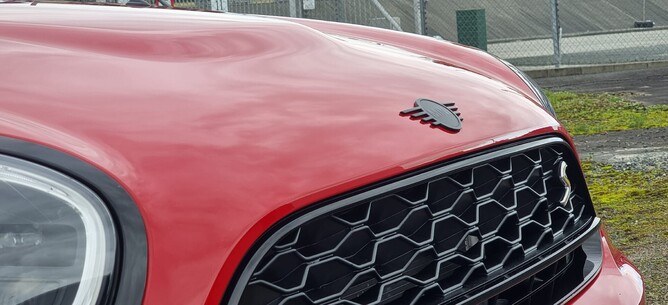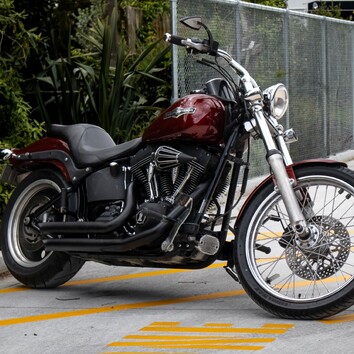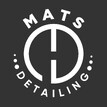If you spend any time on SH1, out on rural Waikato roads, or even just navigating Hamilton’s busy streets, you’ll know how quickly a spotless front bumper collects stone chips and scuffs. That’s exactly what paint protection film (PPF) is designed to stop. PPF is a clear, self-healing urethane layer applied to high-impact areas (or the whole car) to absorb the punishment so your paint doesn’t. Installed properly, it’s virtually invisible, preserves resale value, and keeps your car looking newer for longer.
At Mat’s Detailing, we combine meticulous surface prep with specialised software and plotter-cut patterns that are matched to your vehicle. That means no freehand knife work near your paint and consistent, repeatable results. Below is everything you need to know to decide whether PPF is right for you—and how we fit it into a long-term paint protection plan alongside ceramic or graphene coatings.
What PPF actually is (and why it works)
Modern PPF is a multi-layer thermoplastic polyurethane (TPU) film, typically 6–10 mil thick (about 150–250 microns). It includes a clear coat layer that’s self-healing: light washing swirls and minor marks re-level with engine or solar heat. Because the film is thick and elastic, it absorbs the energy from small stones, road grit and door scuffs that would otherwise chip the clear coat. If a film section is ever damaged beyond cosmetic repair, it’s removable and replaceable without harming healthy OEM paint underneath.
In short: PPF is the only protection that actually stops stone chips. Coatings help with washing and light marring but can’t absorb impact. Many clients choose both—PPF where the damage happens, and a coating everywhere for easy cleaning.
Where PPF makes the biggest difference
You don’t have to wrap the entire vehicle to see a huge benefit. The most effective zones are the ones that take the hit first:
Full-front: Front bumper, bonnet/hood, front guards, mirror caps and often headlights.
High-wear spots: Door edges, door cups, sills, rear bumper top (loading lip), A-pillars, rocker panels.
Road-blast areas: Lower quarters behind the wheels—essential on utes, SUVs and anything that sees gravel or construction sites.
We’ll inspect your car together and recommend the minimum coverage that suits how and where you drive.
Gloss or matte? (Plus stealth transformations)
PPF comes in high-gloss or matte (satin/stealth) finishes. Gloss PPF is designed to disappear over healthy clear coat, adding depth while remaining virtually invisible. Matte PPF can transform an existing gloss colour into a satin/stealth look without a respray—great if you want a unique finish while still enjoying real chip resistance. Many clients do a stealth full body with gloss accents or vice versa; we’ll show you sample panels in studio so you can choose confidently.
Plotter-cut patterns vs freehand cutting
Old-school installs often meant trimming film with a blade on the vehicle—a risk to your clear coat. We use a computer-controlled plotter with a database of patterns tailored to your make and model, so pieces are cut to size before they ever touch your paint. We also pursue wrapped edges wherever the panel design allows; this hides the film edge and helps keep grime from catching on the border. Where wrapping isn’t practical, we set tight, consistent margins that look clean and are easy to maintain.
Surface preparation is everything
PPF locks in whatever is underneath. That’s why prep is non-negotiable:
Decontamination: Citrus pre-wash, two-bucket contact wash, iron remover and fine-grade clay to remove bonded fallout.
Paint correction (as needed): We refine light swirls and haze with the least-aggressive approach—Minor, Major or Showroom—so the film sits over crisp, glossy paint.
Panel prep: Multiple solvent wipe-downs remove polishing oils for optimal adhesion.
This prep not only improves the look through the film but also helps edges bond cleanly, reducing the chance of lift.
What the install day looks like
We work panel by panel under colour-match lighting. Pieces are floated into place with a slip solution, then squeegeed to remove moisture and align precisely around badges, parking sensors and body lines. Complex panels may be installed in multiple sections to maintain tension and reduce visible stretch; seams are placed where they’re least noticeable. Once the film is down, we perform a thorough edge check, chase out micro-bubbles, and set the vehicle aside so adhesives can settle. You’ll get simple care instructions and a short bedding-in period before the first wash.
How PPF and coatings work together
Coatings don’t stop chips, and PPF doesn’t magically make contamination vanish. They’re a perfect combo:
PPF first on high-impact areas (or the whole vehicle).
Coating next—we apply a ceramic/graphene layer over both paint and film. This improves hydrophobics, makes bugs and tar easier to remove, and keeps the film surface slick so you don’t need to scrub.
If you already have a coating, we can still install PPF; we’ll assess bond on a test area and adjust our prep accordingly.
Real-world expectations and limits
PPF dramatically reduces chips and scuffs, but it isn’t indestructible. A large stone at motorway speed or debris with sharp edges can still mark or pierce the film (far better the film than the paint). Film has a factory texture that ranges from ultra-smooth to light “orange peel”—especially visible on dark colours under harsh lighting. We’ll set expectations based on the brand/finish you choose and your viewing standards.
Maintenance: keep it looking invisible
First 48 hours: Avoid washing; let the film settle and adhesives cure.
Washing: pH-neutral shampoo, soft wash media, gentle pressure. Keep pressure-washer nozzles a sensible distance and don’t blast directly along exposed edges.
Drying: Use filtered air and plush microfibre towels; avoid aggressive rubbing on edges.
Decontamination: Bugs/tar removers labelled PPF-safe are fine. Avoid harsh solvents or abrasive polishes on the film itself.
Polishing: Light refining by hand may be possible on gloss PPF; machine polishing is limited and must be gentle. Ask us first.
With good care, the film’s top coat self-heals light marring with engine or solar heat, preserving that freshly installed look.
Warranty, lifespan and value
Quality PPF comes with a manufacturer warranty against yellowing, cracking and delamination, plus our workmanship guarantee on the install. Actual lifespan depends on sun exposure, wash habits and driving environment, but with proper care you’re looking at years of effective protection. For many clients, PPF pays for itself by preventing resprays on the most vulnerable panels and keeping resale sharp. Buyers love seeing chip-free leading edges—it signals careful ownership.
Pricing: what influences cost?
Exact pricing varies with:
Coverage: High-wear areas vs full-front vs full-body.
Complexity: Curves, vents, tight sensors and intricate bumpers take more time.
Film type: Gloss vs matte, and premium “ultra-clear/ultra-smooth” films.
Prep level: The amount of correction required to make the base perfect.
We’ll inspect the vehicle and recommend the minimum coverage and prep that meets your goals and budget—no upsells, just honest advice.
PPF for utes, SUVs, bikes, RVs and boats
PPF isn’t just for cars. It’s brilliant on utes and SUVs for sills, lower quarters and tailgates that see load-outs. Motorbikes benefit from tank/fairing protection where jackets and bags rub. RVs and caravans see big gains on leading edges and doorways. Even marine applications (above the waterline) can benefit on high-contact zones. If it’s painted or gelcoat and gets scuffed, we can usually protect it.
FAQs
What is PPF and how is it different from a ceramic coating?
PPF is a clear, self-healing film that physically blocks stone chips and scuffs. Ceramic or graphene coatings add slickness and chemical/UV resistance but don’t stop impact. Many clients combine both for the best of each—common for new car protection Hamilton searches.
How much does PPF cost in Hamilton?
Cost depends on coverage (high-wear areas vs full-front vs full-body), vehicle complexity and film type. After an inspection we’ll quote a package that suits your goals and budget for PPF Hamilton or paint protection film Waikato.
Will I see the edges?
We wrap edges wherever the panel design allows, and we use plotter-cut patterns for tight, consistent margins. On most gloss cars, PPF is very hard to spot unless you know where to look—exactly what people want when searching invisible PPF Hamilton.
How long does PPF last?
With proper care and washing, quality films deliver years of protection. Manufacturer warranties cover yellowing, cracking and delamination; we also stand behind our workmanship for paint protection film Waikato installs.
Does PPF change the colour or gloss?
Gloss PPF is designed to disappear; many people say it adds “wetness.” Matte (stealth) PPF intentionally changes the look to satin without paint. If you’re curious about matte PPF Hamilton, we can demo samples on your colour.
Can you install PPF over existing ceramic/graphene coatings?
Yes, often. We’ll test bond and adjust prep as needed. After installation we typically coat the film so the whole vehicle has matching slickness and easy cleaning—popular with ceramic coating and PPF Hamilton clients.
How do I wash a PPF’d car?
Wait 48 hours after install, then use pH-neutral shampoo, soft mitts and light pressure. Keep pressure-washer nozzles back from edges, and use plush towels or filtered air for drying. Ask about our car detailing Hamilton maintenance plans.
Will PPF self-heal scratches?
Light swirls and small marks typically level out with heat. Deeper gouges may mark the film; the good news is the film takes the damage, not your paint, and sections can be replaced.
Is PPF worth it on a daily driver?
If you do regular motorway kilometres or rural roads, absolutely. Stopping chips on the front end preserves value and keeps the car looking newer—exactly why stone chip protection Hamilton is one of our most requested services.
Ready to protect your paint?
Bring your vehicle to our Riverlea studio and we’ll map out the smartest coverage for how you drive. Visit us at 2/142 Riverlea Road, Riverlea, Hamilton 3216, call 027 352 6667, or email matsdetail@gmail.com. We also offer a mobile service for select detailing work throughout Hamilton, Cambridge, Te Awamutu and surrounding areas—ask us what’s possible for your vehicle.





